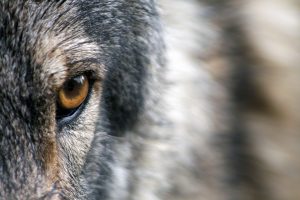Colorado Parks and Wildlife is proposing a study whereby they will kill mountain lion (cougars) and bears in the northwest portion of the state to see if it can help boost mule deer populations.
It must be noted that mule deer have been on the decline around the West for decades, and no one has really been able to pin point the reasons. Colorado’s highest population estimate occurred in 1983, when deer numbers reached an estimated 625,000 and today the population is under 400,000.
In the case of northwest Colorado, some suggest that on-going oil and gas development could be the cause in the recent deer decline. In 1989, there were 5,000 oil and gas wells in the state, and by 2014, the number had risen to 32,000.
Each of those wells requires a pad, and access roads, plus power lines, pipelines and other industrial support. All of this fragmenting mule deer habitat, blocking migration corridors, as well as creating human activity in what were formerly remote lands.
Research in other states like Wyoming have concluded that energy development does indeed harm mule deer. http://wyomingpublicmedia.org/
Add in livestock grazing on public lands—especially in drought years when cattle and sheep can graze all forbs, grasses, and many shrubs to the ground– and you have an additional stress on mule deer.
Other factors affecting the sagebrush sea where mule deer reside such as the record droughts which can reduce the nutritional quality of forage as well as the spread of cheatgrass facilitated both by livestock grazing and on-going energy development. Cheatgrass can increases the fire frequency in sage brush areas leading to excessive losses of sagebrush, an important winter food for deer.
Past high mule deer numbers, encouraged by state wildlife agencies, may also be a factor in today’s decline. The heyday for mule deer meant some important forage species were heavily grazed/browsed to the point where the habitat’s ability to support mule deer has declined. In some cases, it has not recovered, especially when drought conditions preclude good vegetation growth.
Finally, to add insult to injury, in some parts of Colorado, rural housing tracts are gobbling up winter range and increasing human activity in critical mule deer habitat.
All of these combined means you have a perfect storm for mule deer decline.
Indeed, one would have to wonder mule deer haven’t declined given these factors.
Yet predators are being targeted as the culprit. This scapegoating of predators has gone on for more than a hundred years, and what study after study has already previously concluded is that predators are seldom the ultimate factor in ungulate declines.
For instance, if habitat quality declines say from drought, then mule deer fawn may be born under-weight or have less security or simply are displaced from traditional winter range and therefore more vulnerable to predators. But ultimately it is drought, cheatgrass, cows, or energy development which are the ultimate factor that creates predator vulnerability.
Predators may be the proximate cause of ungulate decline in some places for a short time, but keep in mind that predators are ultimately determined by the availability of prey. If mule deer decline, and there are few alternatives, predator numbers will fall in line with their food resources.
Some may wonder why a state wildlife agency like the Colorado Parks and Wildlife is targeting predators when all these other factors are involved. The obvious answer is that they are afraid to attack the energy, livestock and housing industries, and their political supporters like rural county commissioners.
But why is a decline in mule deer even an issue? Mule deer in Colorado are by no means endangered. There are hundreds of thousands of them. The issue is that the numbers have fallen below “objectives’. “Objectives“ is a code word for desired production. The Colorado Parks and Wildlife has set a target for mule deer it believes can be sustained, and still hunted. If the population falls too low, the Department will have no choice but to cut hunting seasons or make other adjustments that will be unpopular with hunters.
The problem is that all state wildlife agencies depend on the sale of hunting tags and licenses to fund their bureaucracies. Thus, these agencies are not going to “bite the hand that feeds them.” Even if there is the perception that predators are responsible for mule deer declines, the Colorado Parks and Wildlife will develop its management strategy in part based upon these perceptions.
If Colorado Parks and Wildlife sincerely cared about the future of mule deer, not just the future of its bureaucracy, it would be far more aggressive in going after the factors that are causing the long-term decline in mule deer habitat quality. Those factors are energy development, livestock grazing, and rural housing sprawl
As a state agency fearful of attacking and antagonizing any major industries, the Colorado Parks and Wildflie picks on the one thing that does not have a major lobby and political influence—predators. Sadly, this is the same situation throughout the country.
In the end, this strategy is going to lead to the demise of the state wildlife agencies themselves because even if you remove predators temporarily from the picture, the habitat qualify is continuing to decline. If these agencies were interested in preserving mule deer, much less even their weak-kneed bureaucracies, they would be outspoken in their commendation of the industries that are the real reasons for mule deer declines everywhere.

Comments
Pingback: Colorado Parks and Wildlife targets predators - Friends of The Wolf